Text
Septic tank enzyme treatment
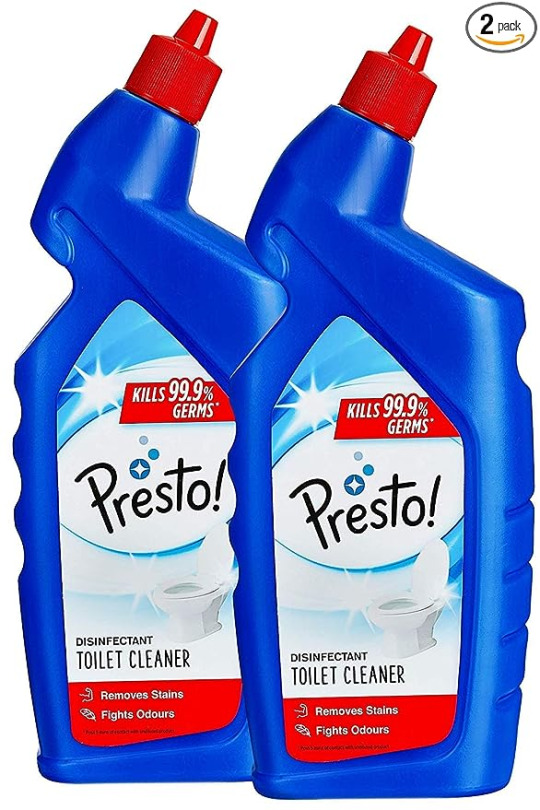
#At Mayflower Chemicals#we understand the importance of maintaining a healthy septic system. Our#Septic tank enzyme treatment is a powerful and environmentally friendly solution designed to#support the optimal performance of your septic tank. In this article#we'll explore what Septic tank#enzyme treatment is#why it's essential for septic system maintenance#and how our product excels in#this regard.#Understanding Septic tank enzyme treatment:#Septic tank enzyme treatment is a specialized formula that introduces beneficial enzymes into your#septic system. These enzymes facilitate the breakdown of organic matter#helping to digest solids#reduce scum buildup#and improve the overall efficiency of your septic tank.#The Significance of Septic tank enzyme treatment:#Efficient Waste Digestion: Enzymes accelerate the decomposition of organic waste within your septic#tank#ensuring that solids are broken down more effectively.#Reduced Scum Accumulation: By promoting the breakdown of oils and fats#enzyme treatment helps#prevent the accumulation of scum layers on the surface of your septic tank.#Preventative Maintenance: Regular use of enzyme treatment can prevent common septic system#problems#such as backups and overflows.#Odor Control: The digestion of organic matter by enzymes can help reduce foul odors that may emanate#from your septic system.#Why Choose Mayflower Chemicals&
1 note
·
View note
Text
wishing people would understand (and advertisers would stop giving the impression) that herbal remedies don't actually work like fantasy potions where you have a Symptom and they magically target that Symptom specifically-- they work exactly like pharmaceutical medicines but at a less concentrated scale, and it can interact poorly with them if you are already using them.
ashwagandha doesn't "lower your anxiety", it reduces your cortisol levels, which can in turn lower your blood pressure and interact with other adrenal and BP meds. ginkgo doesn't "help you think", it dilates your blood vessels and is an anti-platelet, which increases cerebral bloodflow but can interact with other circulatory meds. grapefruit seed extract is an incredible antifungal but it will inhibit enzymes that break down many types of medication and lead to blood toxicity of those meds.
i've worked in this industry since before insta/tiktok was a major force in advertising for it and i've watched the swing from people generally being educated about this niche thing they have come in to buy to "i saw on tiktok that this will give me energy"
.... will it? have you had bloodwork done? are you adequately absorbing your nutrition? are you getting sunlight? stop being scammed by symptom-centric buzzwords. anything that promises it will give you energy or help you focus or whatever else hinges entirely on your body chemistry fitting very certain criteria and a lot of people end up disappointed when that cordyceps did nothing for them when it turns out they're low on stomach acid and not synthesizing their B vitamins correctly or something else that is way above my paygrade to determine.
the american healthcare system is a shitshow and people often have no choice but to take their treatments into their own hand, but "natural remedies" want your money just as bad as "big pharma" and it's up to the individual to do their epistemological due diligence when treating themselves. godbless.
#Turning off rbs for a bit on this one#no one said anything crazy i just don't want the devil in my house so i am closing the door
26K notes
·
View notes
Text
"People living with diabetes might have a new hope. Scientists have tested a new drug therapy in diabetic mice, and found that it boosted insulin-producing cells by 700% over three months, effectively reversing their disease.
Beta cells in the pancreas have the important job of producing insulin in response to blood sugar levels, but a hallmark of diabetes is that these cells are either destroyed or can’t produce enough insulin. The most common treatment is regular injections of insulin to manage blood sugar levels.
But a recent avenue of research has involved restoring the function of these beta cells. In some cases that’s started with stem cells being coaxed into new beta cells, which are then transplanted into patients with diabetes. Researchers behind this kind of work have described it as a “functional diabetes cure.”
Now, scientists at Mount Sinai and City of Hope have demonstrated a new breakthrough. Previous studies have mostly involved growing new beta cells in a lab dish, then transplanting them into mice or a small device in humans. But this new study has been able to grow the insulin-producing cells right there in the body, in a matter of months.
The therapy involved a combination of two drugs: one is harmine, a natural molecule found in certain plants, which works to inhibit an enzyme called DYRK1A found in beta cells. The second is a GLP1 receptor agonist. The latter is a class of diabetes drug that includes Ozempic, which is gaining attention lately for its side effect of weight loss.
The researchers tested the therapy in mouse models of type 1 and 2 diabetes. First they implanted a small amount of human beta cells into the mice, then treated them with harmine and GLP1 receptor agonists. Sure enough, the beta cells increased in number by 700% within three months of the treatment. The signs of the disease quickly reversed, and stayed that way even a month after stopping the treatment.
“This is the first time scientists have developed a drug treatment that is proven to increase adult human beta cell numbers in vivo,” said Dr. Adolfo Garcia-Ocaña, corresponding author of the study. “This research brings hope for the use of future regenerative therapies to potentially treat the hundreds of millions of people with diabetes.”
The results are intriguing, but of course being an animal study means there’s still much more work to be done before it could find clinical use. So far, harmine alone has recently undergone a phase 1 clinical trial in humans to test its safety and tolerability, while other DYRK1A inhibitors are planned for trials in humans next year.
Perhaps most importantly, the team will soon experiment with combining beta-cell-regenerating drugs with others that modulate the immune system. Ideally this should help overcome a major hurdle: the immune system will continue attacking new beta cells as they’re produced.
The research was published in the journal Science Translational Medicine."
-via New Atlas, July 14, 2024
#diabetes#diabetic#insulin#blood sugar#type 1 diabeties#type 2 diabetes#medical news#medical research#drug trials#good news#hope
896 notes
·
View notes
Text
High Maintenance 101
Prissy Girl Beauty Regimens 🎀


my prissy girl guide to beauty services and building a beauty lifestyle that fits you 💗
Skincare:
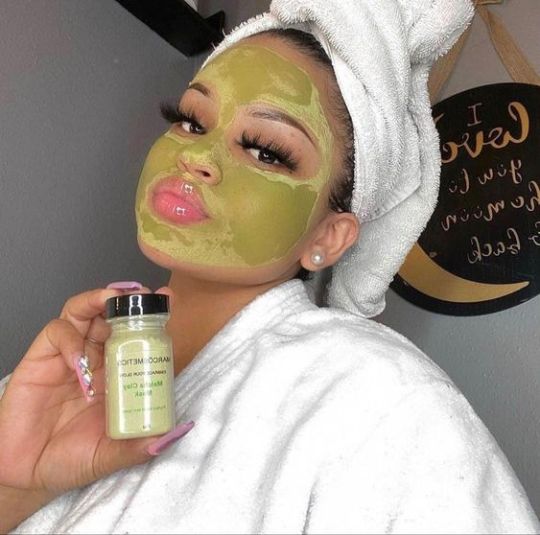
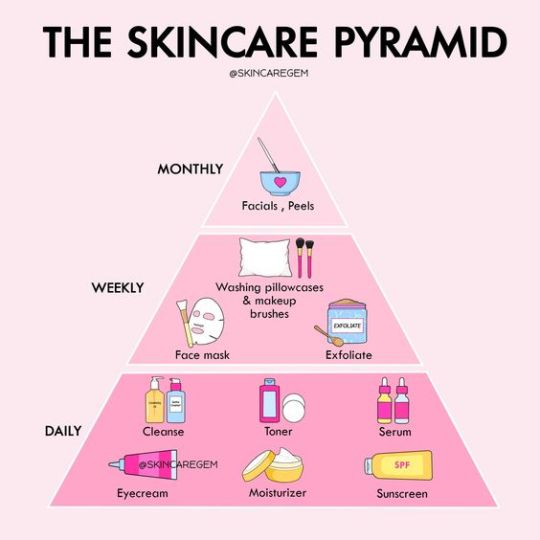
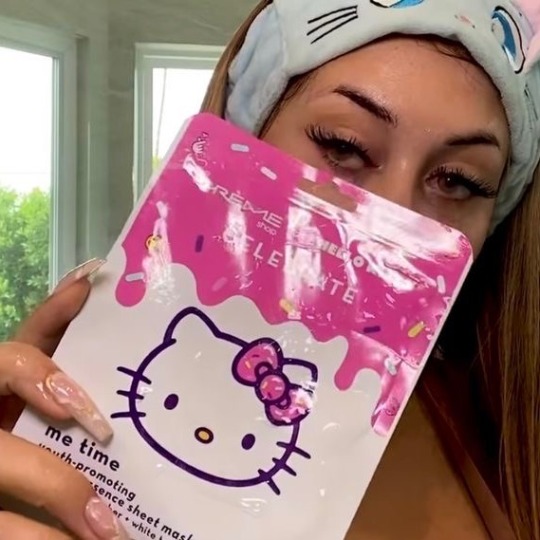
Essential Skincare Routine ❤︎︎
twice daily, in the morning and at night
daytime: gentle cleanser, toner, serum, eye cream, moisturizer, SPF
prep and protect skin
nighttime: double cleansing with oil and cleanser, exfoliation, treatments, moisturizer
wash away the day and help skin accept treatments and actives during your beauty sleep
products will change depending on skin type and goals, but sequence will more or less stay the same
Face Masks + Treatments ❤︎︎
Face Masks -
typically done at home 1-3x/week
clay, gel, mud, cream, liquid
my fav masks at home:
aha + bha liquid mask by the ordinary: a literal overhaul of my pores. it’s refining and helps reduce texture and hyperpigmentation. 1-2 x/week
korean modeling mask: i use this after doing everything in my routine. it’s super cooling and smooths my skin out. the low temp of the mask reduces flushing of my skin and helps the steps in my routine absorb better. 2-3 x/week
Treatments -
done either 1-3x/week and/or exclusively at night
consumer grade Retinols, AHAs, BHAs at high strength
little extra things i like to use to enhance my routine:
gua sha, ice pack, rose quartz roller, however often i choose
Facials ❤︎︎
done every 1-2 months by licensed estheticians
often includes exfoliation and extraction
Classic Facial: cleanse, extract, massage, moisturize
HydraFacials: extracts pores while infusing serums to boost skin’s vitamin and nutrient content
dry, dehydrated skin
Microdermabrasion: microabrasive tool removes outermost, textured, damaged layer of skin using suction to reveal a smooth and refined new layer of skin
sun damaged, aged, textured skin or skin with hyperpigmentation
Chemical Peel: application of medical grade AHA, BHA, Lactic Acid, Fruit Enzymes, or Retinol to peel away top layers of skin over the course of 1-2 weeks
pore refining, brightening, and anti-aging
after care is crucial. skin will be peeling and sensitivity to sun is increased. SPF MUST be used. it’s heavily advised that clients stay home for the first few days.
HydroJelly Facial: facial made of electrolytes, algae, organic white grain oat flour, rice flour, and white willow bark powder. leaving your skin hydrated, plump, and nourished. forms a vacuum-like seal that compresses facial contours.
there are 25 different hydrojelly pro masks for most skin concerns you may have, check here
More Facials ❤︎︎
Contouring Facial: sculpting, tightening, and lifting of facial muscles
LED Facial: uses LED light to soothe inflammation, aiding in acne healing and prevention
Vampire Facial: plumps skin and improves wrinkles by extracting blood, removing its platelets, then either re-injecting it into the skin or applying it topically
Diamond File Facial: finely ground diamonds resurface skin by filing to improve dark spots
Glass Skin Botox: multiple tiny botox injections just below the surface of the skin. alleviate fine lines, redness, texture, and more achieving glass skin
AquaGold Facial: microinjections that combine vampire facial methods, hyaluronic acid, botox, stem cells, antioxidants, vitamins, peptides, etc. improves fine lines, wrinkles, pores, pigmentation, acne scarring, dryness, tone, texture, skin elasticity, and more
cite
Hair:

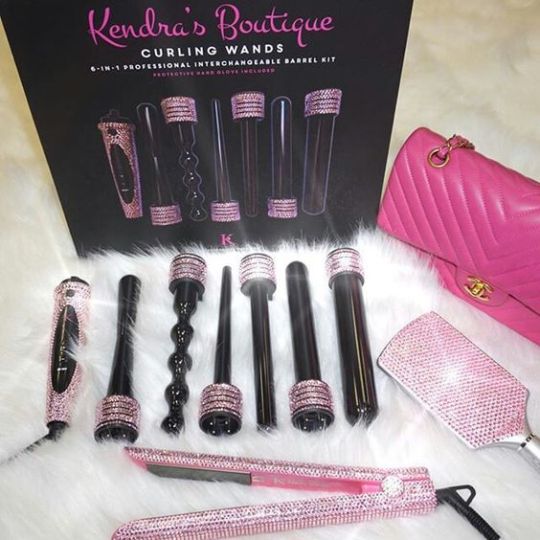

Hair Care ❤︎︎
Wash Routines:
curly textured: wash and condition every 2-3 weeks, deep condition every 1-2 weeks
straight: wash and condition every 2-3 days, deep condition every 2-3 weeks
Styling ︎❤︎︎
Hair should have a style everyday! At home hairstyling is limitless and really depends on your taste and lifestyle. The everyday woman does her own her once every 1-4 weeks using natural hair products, heat, or other tools.
Professional Stylists:
hair is styled every 1-3 months: uses heat to straighten or curl, extensions to lengthen and add volume, shears to maintain/attain a shape and length
trim ends: every 6-8 weeks
hair color: touched up roughly every 6-8 weeks (depending on how fast your hair is growing and how fast your color will fade)
Silk Press:
after a clarifying wash and deep conditioning, natural hair is straightened using flat iron and/or pressing comb, then usually curled in feathers or pin curls to preserve the style
lasts 3-4 weeks depending on maintenance
preserved by wrapping hair at night, keep hands out of hair, and using a wide toothed comb only
can be further styled with different kind of rollers, or with pin curls
Braids:
afrocentric hairstyles typically done to protect hair while maintaining beauty
lasts 3-8 weeks
styles include knotless braids, faux locs, stitch braids, french braids, etc
Extensions:
hair added to natural hair to enhance length or volume
can be done at home with patience and proper materials
sew-in extensions: (my personal fav) 1-2 months
your natural hair gets braided down flush to your scalp and the bundles are sewn on by the wefts in a flat pattern typically with a section of hair left out to cover the wefts $100-600
microlinks: up to 4 months
i-tip extension is added to hair using micropliers, clippers and loop tool. takes far longer than most extension methods but looks the absolute most natural $500-1000
tape-in extensions: up to a year, touch ups every 4-6 weeks
medical grade tape is used to attach extensions to small sections of hair $200-400
clip-in extensions: 3-6 months
extensions are clipped on by the wefts. the hair itself can last up to six months, but it’s not recommended to sleep, shower, or swim with the extensions in $50-100
Natural Styles:
all last roughly 1-2 weeks at most. allowing hair to completely DRY is crucial for these styles. your natural hair can be further changed in styles like buns, puffs, etc once dry
natural hair essentials: scalp oil, leave in conditioner, detangling brush, wide tooth comb, curling cream, styling gel, edge control and edge brush
wash n’ go
wash and detangle, then use leave in conditioner to keep hair moist. oil on the scalp and ends is recommended for growth and healthy ends
bantu knots
a traditionally african style where the hair is cleanly sectioned (usually parted in a cute pattern) and twisted into knots. style can be worn just like this or taken down for curls
braid/twist out
a specific pattern of curls is achieved after hair is twisted or braided with curl preserving products. end result depends on how big your twists or braids are
roller set
hair is sprayed with water and curl cream applied before roller of your choice is added. hair is left to dry usually overnight for springy well formed curls
Brows and Lashes:
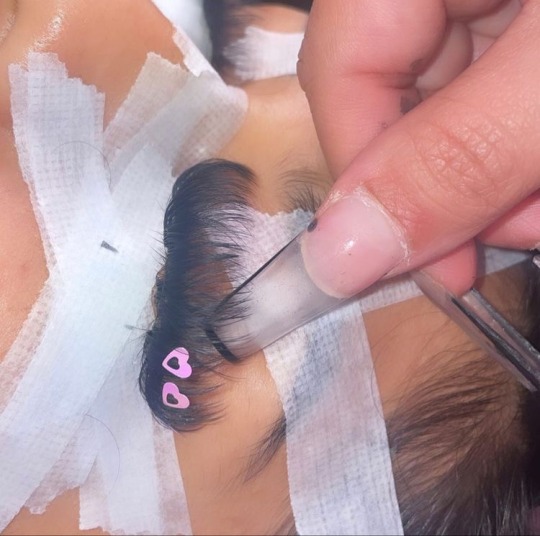
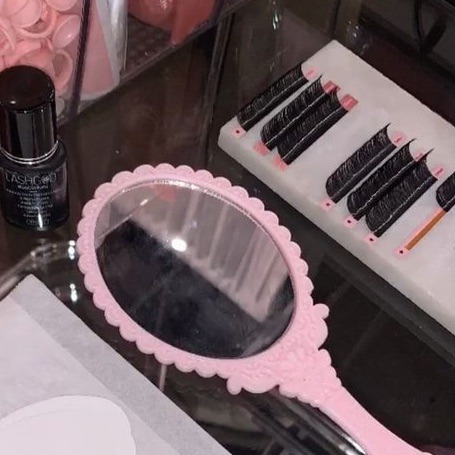
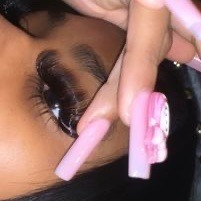
Brow Shaping ❤︎︎
in salon or at home
Waxing - every 3 weeks
Threading- every 2-3 weeks
Razor Shaping - weekly
Brow Enhancement ❤︎︎
Tinting - monthly
can be done at home or by pro in the salon
Microblading - every 1-3 years + annual touch ups, exclusively professional work
cosmetic tattooing using a manual tool with nearly invisible hair-like needles to inject pigment in brows to create your desired brow look
Lash Enhancements ❤︎︎
*done exclusively by professionals
Lifts - every 6 weeks
basically a perm for your lashes to curl them semi-permanently for lashes to appear longer
Lash Extensions - new set every 6-8 weeks, fill ins every 2-3 weeks depending on quality and style
false individual strands of lashes glued to natural lashes to create semi-permanent length and/or volume
lash baths: wet lashes and apply a small amount of gentle cleanser or a “lash bath” to lashes. cleanse lashes and eyelids for about 10 seconds. hold a towel under your eye and use a nozzle bottle to flush soap and bacteria from lashes then dry with a disposable lint free towel. finish by brushing your lashes with a spoolie. daily.
Lash Styles:
Classic: one lash on each fan, thin lashes
Volume: fluffier lashes with more lashes on each fan
Hybrid: uses classic and volume lashes to make an alternated look
Russian: volume lashes made with very thin individuals, 5-6 extensions per natural lash, fanned out look
DIY Lash Extensions - lasts about a week (sometimes longer)
lash fragments or individual wisps are glued either under the lashes or on the lash line. KISS Falscara is a product that makes this concept simple and easy
Nails:
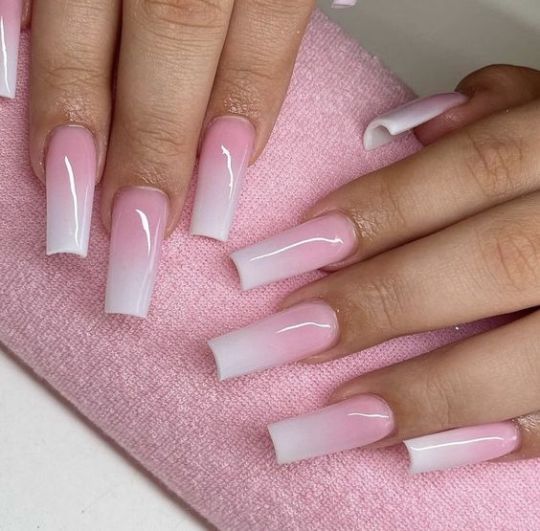
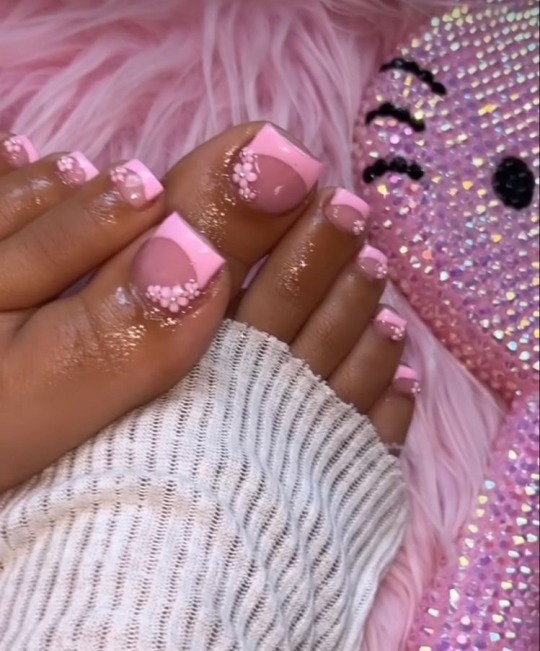
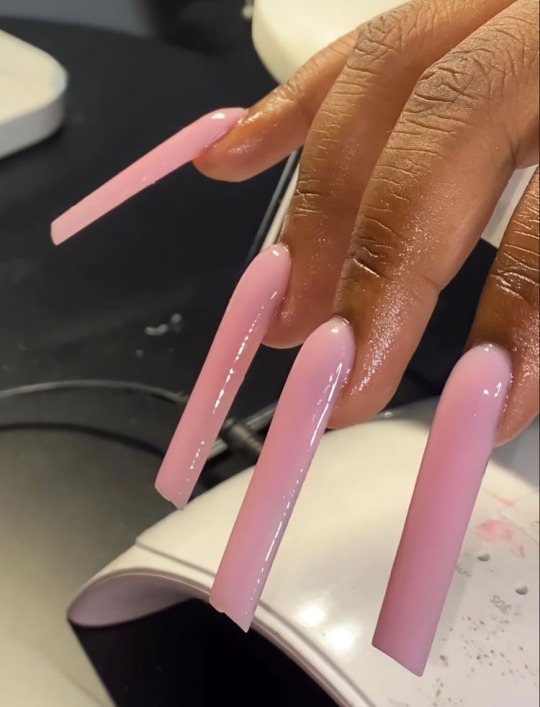
all these services can be done at home with the proper materials and KNOWLEDGE
Classic Manicure ❤︎︎
every 1-2 weeks
nail service that consists of soaking hands in warm soapy water then drying them. nails are trimmed, filed, and buffed. cuticles are pushed back before applying nail polish (base coat, color, top coat), then finally cuticle oil is applied.
nails can be enhanced with rhinestones, glitter, or charms and attached with uv gel or nail glue
my fav styles are pink, cream, white, black and any french tip using those colors
Pedicure ❤︎︎
every 2-4 weeks
sister to the classic manicure, but can be upgraded depending on materials. steps are similar to manicure, except feet are scrubbed and exfoliated before feet are washed and dried to apply nail color
regular polish, acrylic, or gel can be used on toenails
Gel or Shellac Mani ❤︎︎
every 2-3 weeks
same process as the classic manicure, but traditional nail polish is replaced with uv base coat, gel or CND Shellac polish, then uv top coat that’s cured in a UV or LED lamp
longer lasting and more strong/3d than classic mani and is typically removed by soaking in acetone
Apres Gel-X Nails ❤︎︎
every 2-3 weeks
my personal fav at home nails using the artme yoko matsuda nails. after doing a classic mani sans polish, you apply a dehydrator and primer to prep nail for gel. then you apply builder gel to your natural nail and cure. then you apply that same builder to the nail extension after etching it using an electric drill or acetone. marry the gel to your nail and cure. then just shape to your liking and top with uv top coat. tutorial here
Acrylic Nails ❤︎︎
every 2-3 weeks, nails are fully grown out after 6 weeks
manicure done with liquid monomer and acrylic powder to build and extend natural nail, then polished with color or just a top coat if desired
Russian Mani ❤︎︎
every 4-5 weeks
essentially a gel manicure, but more invasive. the eponychium is snipped away so polish can be applied more closely and flush to the cuticle. this aids in visuals and longevity
service is seen as risky because the skin is more susceptible to fungal or bacterial infection. this is actually how i do my nails at home.
Body:
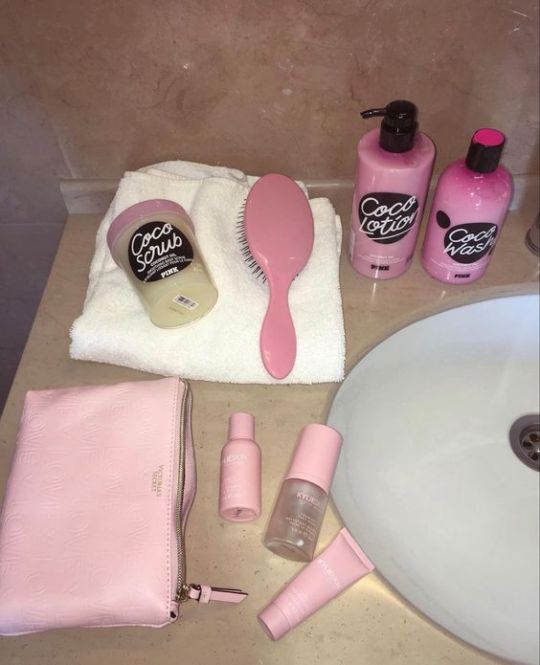

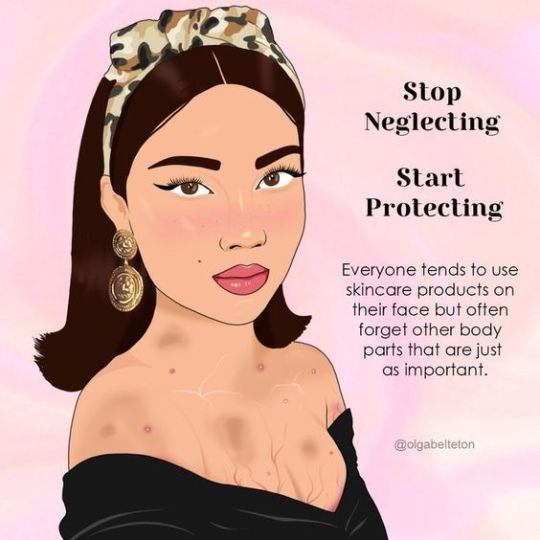
Bathing ❤︎︎
2x daily
self explanatory, we all know how to bathe. i have other posts that talk about my shower and bath routines.
use a gentle cleanser then a scented body wash to complement perfume and smell fresh all day.
if needed, you can use body soaps with actives like aha, bha or retinol to exfoliate or treat skin at night
exfoliation - 2-3x/week. using scrubs, loofahs, bath brushes, etc.
Hair Removal ❤︎︎
shaving - 2-3x/week
waxing - every 3-5 weeks
sugaring - monthly
ipl device - a device that uses light therapy to slowly destroy hair follicles and unwanted pigment in skin. i use mine after every 5-6 shaves but i could really use it more often.
Vajacial ❤︎︎
1-2x/month
a “facial” for your lady area
the esthetician will first wax, then cleanse and apply an enzyme exfoliant. then they extract any blackheads or ingrown hairs from the area before applying a soothing mask usually in the jelly form.
Moisture and Hydration ❤︎︎
body cream or lotion - daily right after bathing to hydrate skin
body oil - daily to seal in moisture and protect skin from debris and dryness
masks - weekly to address particular skin concerns
ex. when i was having eczema flare ups on my back, i used a dead sea mud mask every 1-2 weeks to help treat it
done at home or at spa
glycolic, clay, mud, salicylic, etc.
Enhancement Procedures:
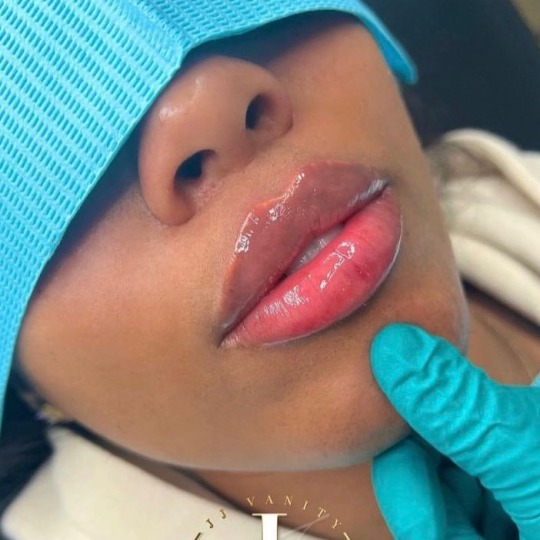

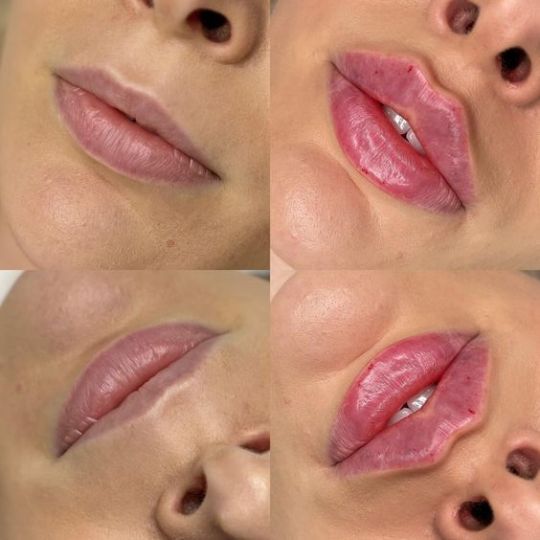
the goal is to look younger and balance facial features. all these services are exclusively done by professionals usually in a medspa and are widely considered luxury.
Botox ❤︎︎
every 6-8 months; between brows, smile lines, outer corners of eyes, etc
discourages muscle movement to reduce wrinkles
Lifts ❤︎︎
lasts about 10 years; face, neck, brow, eyelids
skin is lifted to desired look, then excess skin is removed
Fillers ︎❤︎︎
every 6-12 months; under-eye, lips, jawline, wrinkle sites, cheekbones
injects acids (usually naturally occurring) like Hyaluronic Acid and Calcium Hydroxylapatite to add volume to your face
Body Contouring ❤︎︎
every 2-4 months until desired results are achieved
non invasive liposuction to achieve desired physique
CoolSculpting - cryolipolysis freezes fat cells for the body to the metabolize and and remove them
SculpSure - essentially the same as CoolSculpting, but uses heat and laser technology to destroy fat cells
Laser Hair Removal ❤︎︎
every 5-6 weeks; bikini, underarms, legs, arms
touch ups done every 1-2 years
hair growth is inhibited by exposing follicles to light at frequencies that kill them
Building the Regimen 🗒️💕:



when making appointments with your “glam squad” you can stagger your services by week depending on what’s being done. for example you can get your mani and pedi done one week. then your facials, brows and lashes another week.
Things to Keep in Mind 💭💞:
these frequencies won’t be the same for everyone depending on personal wants, budgets, etc. but will most likely land somewhere in the ranges i gave. if you need touch ups or redos any sooner than i mapped out, then the service most likely was of poor quality.
anything done at home may or may not be up to the level of detail and longevity as salon or spa work. if you see yourself doing the majority of your beauty maintenance at home, this can save money but may end up taking more time than professional services. so it’s a give and take.
More Resources:
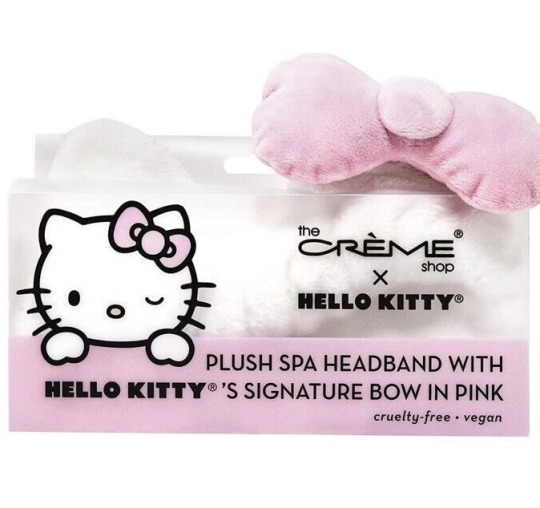


manage your routines, services and products using a beauty binder
a look at my skincare routine
at home beauty treatments for the summer
my hair care routine at home
pretty on purpose by @shefromhouston
monthly beauty routine by @angeljpg
dream girl routines by me
#the prissy girl agenda#dream girl journey#prissy lifestyle tips 💕🎀#dream girl routines#masterpost#my posts#skincare
2K notes
·
View notes
Text
also preserved at the archive
By: Jessica Wildfire
You don't need me to tell you how bad it's getting.
I'll tell you anyway, though.
As we drown in endless waves of Covid that generate millions of infections and thousands of deaths per week, our leaders have effectively stripped away every tool we have. They prefer a society that sacrifices themselves for short-term economic and political gains and then becomes ripe clientele for the pharmaceutical industry. They collude with the media to push out a daily barrage of misinformation aimed exclusively at ensuring we continue to work, shop, and vacation, because that's what they care about. Meanwhile, they do absolutely nothing about pandemics on the way as dozens of diseases spread out of control, at levels 10 times worse than normal. As the World Health Organization sounds alarms, telling us "we have arrived in the post-antibiotic era," and that we faced a future pandemic up to 20 times worse than Covid, our leaders focus on vibes. That last part should get our attention. Yes, we are here. We have arrived in the time when superbugs aren't responding to antibiotics. If that weren't bad enough, they're preying on our weakened immune systems.
And bird flu has likely gone human to human.
But it's not hopeless.
Four years ago, we looked to plants to protect us from pathogens because vaccines and treatments weren't coming anytime soon. The minute those vaccines and antivirals came out, most people forgot all about plants. They reverted to their old assumptions that plants were for hippies.
Well, here we are again.
Our vaccines and treatments are failing, and when they work they're often in short supply, or we can't even get access to them. Moms and dads are rolling out the NyQuil in little cutesie Facebook posts, along with all the pills that treat the symptoms but leave the disease itself to roam free all over your body.
We can do better.
As we mask while demanding clean air and better medicine, it's time to revisit those plants and see what they can do.
Do they even work?
Yeah, they do.
A 2024 review of studies in Viruses identified 10 different plant compounds with broad antiviral properties and effectiveness specific to Covid (and in many cases several other viruses). As they write, "plat-derived molecules can tackle viruses by acting on different aspects of their infection process" and "inhibit coronavirus/host protein pathways" by blocking them. The authors initially identified 45 different compounds and then narrowed them to the 10 most effective.
Plants work because they contain terpenoids, flavonoids, phenols, and alkaloids that all demonstrate "high anti-viral potential against SARS-CoV-2 particles" as well as other viruses. They do this in a variety of ways that work across variants because they block virus entry while also tamping down replication and essentially "stopping its life cycle."
Sounds good to me...
Let's get into it.
First, ginkgo biloba contains two bioflavonoids called quercetin and rutin that can block Covid's 3CLPro BS PL-pro enzymes, as demonstrated in two different studies that looked at how they bind to parts of the spike protein. According to an article in Nature, 3CLPro plays a central role in virus replication, specifically for Covid. Ginkgo also contains kaempfero that inhibits Covid's envelope protein E, "consequently suppressing virus activity and proliferation." G. Biloba also brings an anti-inflammatory effect that can help with recovery as well.
Second, turmeric and curcumin "can either bind directly to the receptor binding domain of the viral S-proteins or secure ACE2 receptors of the hosted cell." Basically, they stop viral entry into your cells. As the authors write, a curcumin derivative called bi-demethoxycurcumin "displayed the best binding affinity" to spike proteins.
It also works on the original SARS virus.
Third, a common spice called artemesia annua demonstrated antiviral activity in clinical trials. The group who took an artemisia compound called artemisinin-piperaquine "took significantly less time to reach undetectable levels of SARS-CoV-2 than the controls." In fact, artemisinins "are known for their extended-spectrum antiviral activity." An artemisia derivative called artesunate has shown effectiveness against both DNA and RNA viruses including hepatitis and HIV.
Artemesia compounds work similar to ginkgo by latching on to five different parts of the spike protein "which might explain its remarkable binding affinity." In addition to flavonoids like quercetin, researchers have identified di-caffeoylquinic acid as doing a lot of the heavy lifting here. Like curcumin, these flavonoids also bind to ACE2 receptors on your cells and protect them. Medical researchers are working on refining these compounds into artenimol, a single high-potency compound for giving to patients.
Fourth, nigella sativa (black cumin seeds) have shown antiviral activity by disrupting viral RNA transcription. Carvacrol and nigellidine extracted from these seeds "can block ACE2 receptors, thus inhibiting the SARS-CoV-2 entry into the host cells."
Fifth, ginger (6-gingerol, 8-gingerol, 10-gingerol) can inhibit parts of the Covid spike protein. Specifically, it's the bioactive compounds geraniol, shogaol, zingiberene, and zingiberenol that do the blocking.
Sixth, garlic (allium sativum) shows antiviral activity. It contains compounds called allicin, ajoene, and garlicin that work against several viruses in the same ways as the other compounds, by targeting spike proteins, disrupting transcription, and protecting your cells' entry channels.
Next:
Cinnamon at 50 ug/ml operates the same way as the other compounds, by blocking host cell entry and viral replication. Rosemary (rosmarinus officinale) shows effectiveness in blocking viral activity, even in a study that compared it to the antivirals remdesivir and favipiravir.
Want an unusual suspect?
It's dandelion.
Dandelion extract has shown to be "effective against influenza virus infection" and in higher concentrations "showed efficacy against spike proteins... and its different mutants" in human lung and kidney cells, while also helping to prevent the cytokine storm that's often so deadly in the acute stage. Here in particular, studies have shown that dandelion extract works regardless of the variant.
Finally, oregano (origanum vulgare) extract demonstrates antiviral activity against many DNA and RNA viruses, including Covid and HIV. As the authors write, extracts "showed remarkable efficacy against equine influenza virus, canine coronavirus, RS, and H1N1. In fact, it can inhibit up to 74 percent of viral activity at certain sites.
Again, carvacrol does the heavy lifting.
I've looked at other supplements and extracts with antiviral properties. They include grapeseed extract, grapefruit seed extract, olive leaf extract, echinacea, St. John's-Wort, and elderberry.
A 2024 study found that oleuropein, found in olive leaf extract, demonstrates high antibacterial activity at 130 mg/ml and high antifungal activity at 65 mg/ml. Another 2022 study found that oleuropein showed significant effectiveness against Covid in hospitalized patients when they were given 250-500 mg every 12 hours for five days. (No real difference between 250 and 500 mg.) The study also reviews previous research that oleuropein has shown effectiveness against other viruses, including HIV and influenza. It works the same way as other flavonoids, lectins, secoiridoids, and polyphenols, by blocking ACE2 receptors.
A 2022 study reviews available research on elderberry (sambucus nigra), confirming antiviral activity against HIV, flu, and coronaviruses. As the researchers write, adults in clinical trials "showed a significant reduction in symptoms, averaging 50 percent." Elderberry has also shown the ability to stimulate the production of immune cells. A 2019 study confirms that elderberry works against flu via "multiple modes of therapeutic action," including the inhibition of replication and host cell entry. An extensive 2021 study looking at prior research found that high-quality elderberry extracts enriched with anthocyanin work especially well.
A 2022 study in Nature found that a mixture of St. John's Wort (hypericum perforatum) and Echinacea showed significant antiviral activity against Covid. Specifically capsules with .9 mg of St. John's "can significantly reduce SARS-CoV-2 viral load," peaking at 36 hours after the start of treatment.
St. John's Wort works just fine on its own. The authors stress the importance of maintaining its concentration if you add other compounds like echinacea.
That said, a 2022 study in Frontiers in Pharmacology found that echinacea at 4,000 mg for 10 days led to a substantial reduction in viral load and fewer hospitalizations when used to treat Covid patients.
Here's a chart docs.google.com/spreadsheets/d/1cTJ3lXHPUW7AyrZPXQb63IjmhVbahRm_7Y5IMxKcqO8/edit?usp=sharing&ref=okdoomer.io
You can also look up most of these supplements and extracts on Mount Sinai's health library. They'll give you a good breakdown. It's a good idea to talk with a doctor if you're skeptical or not sure about interactions with other drugs, or look at the studies on your own. The studies linked in the sheet provide the most detailed dose information I can find, usually presented in a table. Duration runs around two weeks for an acute illness and 3-4 months for chronic infections like HIV.
Do I think it's sustainable to take high amounts of supplements all year long to ward off all kinds of airborne diseases, for the rest of our lives? Not really. That's why we absolutely need clean indoor air, masks, better vaccines, and better treatments. Until then, at least we have this information.
List of studies raindrop.io/JW_Lists/alternative-treatments-47681852
So there you have it.
If you've been wondering whether this stuff really works, the answer appears to be a loud yes. We need more research on dose amounts, but the studies all point in the direction of taking as much as you can while staying within the safe limits, for the duration of any time you feel at risk of getting sick.
Most of these extracts work against multiple viruses. They also help regulate your immune system and push it toward a less inflammatory response.
That's good to know.
My family has been using some of these supplements for several years, and it might explain why we've managed to steer clear of Long Covid. We still wear N95 masks everywhere. We advocate for clean air and better vaccines, along with better treatments. In the meantime, it looks like we can up our supplement game and that it's actually going to bring some benefit.
This isn't magic.
These plant compounds work the same way as many of the antivirals on the market. Medical researchers have been researching the antiviral properties of plants for decades, and cultures have used them for thousands of years. Given our current outlook, they're worth taking seriously.
Use what you can.
#mask up#covid#pandemic#covid 19#wear a mask#public health#coronavirus#still coviding#sars cov 2#wear a respirator
24 notes
·
View notes
Text
Okay. Okay okay okay. So. This is a HUGE discovery. Death caps and destroying angels are two of the deadliest mushrooms in the world; both are in the genus Amanita. Both species contain both amatoxins and phallotoxins, though the latter are likely not a major factor in the massive cell death that occurs in the liver and/or kidneys after consuming these mushrooms.
The most medically significant of the amatoxins is α-amanitin. When a deadly Amanita is consumed, you're likely to get the expected gastrointestinal upset that accompanies many toxic mushrooms within a few hours, and they may last for a few days. Then you start to feel better--but you can't just say "Okay, learned my lesson, I won't eat THAT one again." That's because α-amanitin has been stuck in your liver and kidneys the whole time, destroying their cells left and right, and its deleterious effects are catching up to you. So you can expect to end up in the hospital, potentially dealing with acute organ failure.
Supportive care generally includes IV fluids and electrolytes along with penicillin, oral activated charcoal, and other medications, along with hemodialysis and hemoperfusion. Some people have needed organ transplants, and numerous people have died, especially those who got medical help too late.
While compounds from milk thistle (Silybum marianum) have shown success in treating amatoxin poisoning in a small study several decades ago, there hasn't been much follow-up since. Recently, researchers studied the molecular effects of α-amanitin, and discovered that the enzyme STT3B plays a crucial role in creating N-glycans that facilitate the cell death caused by α-amanitin. Then they went looking for anything that could inhibit STT3B from a list of possible treatments approved by the FDA.
Enter indocyanine green. Developed as a dye for photography in the 1950s, it received approval for medical use a few years later, and has been used for everything from measuring cardiac performance to opthalmology. But it just so happens to also significantly reduce cell death both in vitro in human cell lines, and in vivo in mice. There haven't been any in vivo studies in humans just yet, but results are very promising.
There's one limitation--indocyanine green must be given as soon as possible after ingestion. When it was given eight or twelve hours after α-amanitin poisoning, it was no longer effective due to cell death having already occurred.
Still, the fact that we now have a potential new tool in treating acute α-amanitin poisoning is a massive hope for the future. Couple this with increasing education about safe mushroom foraging and how to identify poisonous species, and we could see a significant reduction in poisoning from those two deadly Amanita species.
#mushrooms#mushroom hunting#shrooms#fungi#fungus#foraging#mushroom foraging#medicine#healthcare#nature#Amanita#destroying angel#death cap
221 notes
·
View notes
Note
Hey! Regarding endo and T, I just want to mention that I had endo that was initially treated with T and the depo provera shot (because I was fuckin') but it came back about 2 years after I started treatment. T by itself only shuts down the reproductive system about 50% of the time, which is why we don't use it as a contraceptive!
I hunted down a second-line treatment, which is to use aromatase inhibitors -- I actually got the idea from another transmasc who was using them as part of his transition to lower his E levels even further! Aromatase is the enzyme that converts T to E, it isn't usually a problem for transmascs but it can make endo keep growing even when your reproductive system is shut down. I started that in 2022 and it's been working well!
So like super glad for the people that T has been helping, just wanted to throw out there that if your symptoms come back you have more options!
hey appreciate you sending this ask!
i've been wanting to look into aromantase, i wasn't aware of the name of it, thank you! that's very important information, some intersex people are affected by this when starting HRT, so this is important information for people with endo and intersex people alike!
thank you, i appreciate the input!
#asks#answers#endometriosis#endo#reproductive health#sex variant#hrt#testosterone#testosterone hrt#estrogen
43 notes
·
View notes
Text
3/27
199 lbs / 90 kg ⬇️ 1.4 lbs
BMI - 34.15
I feel my mental health declining. I should be happy with the loss, but I'm not. I can't help thinking that the real loss is only 0.8 lbs because if I hadn't eaten more yesterday and gained, I would have been under 199 lbs.
I actually wondered if I should wait to put on deodorant so it wouldn't mess with my weight.

I go back to the doctor at the end of April to have my liver enzymes checked again. Doctor highly believes I have fatty liver disease, and treatment is weight loss. How much weight do you think I can lose in a month?
#need to lose more weight#st4rv1ng#starv1ng#th1n$pø#th1nsp1ration#thin$pø#thinspø#twthinspi#low cal restriction#intermittent fasti
25 notes
·
View notes
Text
Vet Bills and a Sick Kitty Boy
Hello all, over the past month and a half I have incurred some medical bills for my cat Alistair, that while one bill hurts but isn't world ending. Multiple have put us in a bind.
Our Total: $430/$1176.86
My Paypal: tielfingriley or paypal.me/tieflingriley
The Story:
So my sweet yet very hungry boy Alistair, had been having stomach troubles. He's 12 years old, so not uncommon for a cat his age, and he has always had a bit of a sensitive tum, but this was different. He was projectile vomiting mostly water, and I had noticed he was loosing weight. He is a long cat, and his healthy weight sits at 15-16 pounds.
So we take him to the vet and the do a initial blood panel with a special panel to check a for a heart protein, it is here that I learn my asthmatic cat also has a heart murmur! But because of the special check it had to be sent to THE ONLY LAB IN THE US THAT CHECKS FOR IT, which meant it was pricey

Good news, blood came back fine. His heart and kidneys weren't failing but he was still vomiting water at this time. At this point we were moved to a different vet who noted his long term tum issues. Informing me that long term inflammation can lead to Gastrol Intestinal Cancer. (Maybe) They only DEFINITIVE way of checking was to slice him open and do biopsies, which wasn't ideal. Instead we opted for an Ultrasound, it would check for inflammation, which would say absolutely yes or no on inflammation, but would still be a maybe on the cancer (however its the same treatment either way). But could also check Liver, Pancreas, and Gallbladder. I of course chose this because it was far less invasive to the boy. Alistair did need to be sedated. He isn't a violent cat, but he is a squirmy noodle.

This is when things got really spicy for us financially. You see this happened RIGHT before my birthday. Like legit I found out my cat had maybe cancer the day before. And my husband a few weeks prior had bought me a rather nice gift of storage drawers? IDK what you would call it but furniture for my art supplies to be stored in. It was a bit pricey but I was having a rough time and a history of astronomically shitty birthdays. (As you can see, the universe has a sense of humor)
So the Ultrasound came back. Yes there are signs of inflammations, so cancer is still a maybe. However, what had the doctors eyes and was concerning her more was the pancreas. It was, extended and incorrect. She believed that it wasn't producing a enzyme to help break down food, particularly fat, for absorption. Essentially, on top of the inflammation, Alistair was slowly starving to death. However before just popping some pig panceas pills inside my boy, she wants to make sure. So more blood work, TO THE ONLY LAB IN THE US OF COURSE, an another bill.

Now we are waiting on this information. He is on some pro and prebiotics that have stopped the vomiting entirely. However his weight is still quite thin. I am unsure if we will have more hefty bills. For reference a checkup at this vet is 50 bucks. So normally its not to rough on us, and check up plus vaccines is 100 which is a planned event. None of this was planned to say the least.
AND NOW THE SAPPY SHIT
Alistair saved my life. I know logically getting a cat as a means to not kill yourself isn't the best thing to do, but sometimes you gotta do what you gotta do. Ive had him since September of 2012. I love that fluffy biscuit stealing bastard with my entire heart. I have a tattoo on him on my arm, my first and currently only tattoo. Because of him, I was able to live a longer and healthier life and I want that for him.
Despite being a cat, he loves biscuits, potato chips, and the tops of muffins but only the tops. He can and will open cookie jars for cookies. I have explained he is an obligate carnivore and he has explained like a good southern he cant turn down a carb.
He will fist fight you for cheese. Love to play fetch with a hair tie. Isn't a lap cat with the exception of me. LOVES NAPS, and likes to watch Markiplier.
He's a very good boy with separation anxiety, and tummy issues who just wants to nap and eat and I think we can all relate.



Oh...and he has a little mustache
Thank you to all who donate and to everyone who spreads the word to help us get out of this debt.
#Fundraising#gofundme#Donate if you can#But absolutely reblog#Thank you so much#Alistair the cat#Cat
31 notes
·
View notes
Text

CHECK THIS OUTTTT this is an article about a really neat paper by neumann et al. that was published in science on the 28th of june that looks at epigentic editing that may help in treating prion disease and may have applications in other neurodegenerative diseases which cause protein accumulation like huntingtons, alzheimers, or parkinsons.
they created a fusion protein named CHARM. charm stands for Coupled Histone Tail for Autoinhibition Release of Methyltransferase. broken down, this name refers to:
the coupled histone tail: histones are proteins that help package DNA in cells. the "tail" of a histone is a part that can interact with other molecules. tn CHARM, this histone tail is used to help guide the tool to the right spot on the DNA, in this case the area which codes for PRP (prion proteins).
an autoinhibition release: this means that CHARM can remove a natural "brake" or stopper that normally keeps the DNA-modifying enzyme (methyltransferase) from working.
methyltransferase: this is the enzyme that adds the methyl groups (chemical tags) to the DNA, which the cell to ignore that part of the DNA and not produce the prion protein. basically a little DNI marker on the DNA.
rather than using CRISPR which is too large to do what they want, they used zinc finger proteins which are much smaller and are targeted to the prion protein. when the zinc finger protein attaches to the prion gene, the methyltransferase then recruits methyl groups to the DNA sequence telling the cell to ignore it!
sonia vallabh, one of the authors of the paper gave a ted talk earlier this month about prion disease. she was diagnosed with familial creutzfeldt-jakob disease and has been working on treatments and a cure since her diagnosis.
youtube
11 notes
·
View notes
Text
A new drug was able to quickly and temporarily immobilize sperm in male mice, according to a study published Tuesday in Nature Communications, a discovery researchers described as a “game-changer” that could pave the way for a male contraceptive pill and could ultimately allow men to share equal responsibility with women for birth control.
A single oral dose of the drug immobilized mice sperm for up to two and a half hours and was 100% effective in the first two hours, the researchers said.
Treated mice showed normal mating behavior but none impregnated a mate despite 52 different attempts to do so, the researchers said, compared to almost a third of mice impregnating mates after being treated with an inactive control substance.
The drug is fast-acting—Melanie Balbach, one of the study’s authors and a researcher at Weill Cornell Medicine, said it worked within 30 to 60 minutes—and works by inhibiting an enzyme needed for sperm to function.
It is also temporary, with efficacy dropping to 91% at three hours and fertility returning to normal by the next day.
These properties set the drug apart from many of the other efforts to develop a male contraceptive, the researchers said, which often rely on hormones to control fertility and can take weeks or months to be effective or to wear off.
The study demonstrates proof-of-concept for “safe, non-hormonal, on-demand, male contraceptives,” the researchers said, and while it may work in theory any product will be many years and a great deal of testing in the future.
-via Forbes, 2/14/23
And there is ANOTHER breakthrough with a different method from just two months later:
A ground-breaking contraceptive pill for men could be just around the corner after a major genetic breakthrough. Scientists at Washington State University have identified a gene which temporarily renders sperm infertile after they remove it.
The research team discovered a protein encoded by this gene, found solely in the testicular tissue of most mammals, which reduced sperm counts and deformed remaining sperm to make them incapable of fertilizing an egg when altered. The potentially historic breakthrough contraceptive pill would also have no hormonal side-effects and could be additionally help control animal overpopulation — replacing castration.
Crucially, the destabilization of the infertility protein is not permanent, meaning sperm will recover once the person or animal stops taking the treatment. Scientists have hailed the discovery as potentially important for the future of the human race. In their study, researchers identified the expression of a gene called Arrdc5 in the testicular tissue of mice, pigs, cattle, and humans...
However, disrupting the functions of this protein will not require any hormonal interference, a key hurdle considering the multiple roles testosterone plays beyond sperm production in men, including the building of bone mass and muscle strength as well as red blood cell production. The team also says that designing a drug which only targets this protein would further make it easily reversible as a contraceptive.
-via Study Finds, 4/19/23
Note: Please excuse the cissexist language from the sources here, which I have not edited out for accuracy, etc. The Forbes article does respectfully discuss trans and nonbinary people and their birth control needs further down.
#birth control#contraception#reproductive care#reproductive rights#medical science#genetics#sperm#gender equality#good news#hope
183 notes
·
View notes
Text
shared with the Good News App // goodnews.eu
Plastic pollution is everywhere, and a good amount of it is composed of polyethylene terephthalate (PET). This polymer is used to make bottles, containers and even clothing. Now, researchers report in Environmental Science & Technology that they have discovered an enzyme that breaks apart PET in a rather unusual place: microbes living in sewage sludge. The enzyme could be used by wastewater treatment plants to break apart microplastic particles and upcycle plastic waste.
...
Other bacterial species, including the common E. coli, have previously been engineered to turn plastic into other useful molecules. However, C. testosteroni naturally chews up polymers, such as those in laundry detergents, and terephthalate, a monomer building block of PET. So, Ludmilla Aristilde and colleagues wanted to see if C. testosteroni could also produce enzymes that degrade the PET polymer.
...
When the gene encoding for this key enzyme was placed into a microbe that doesn't naturally degrade PET, the engineered microbe gained the ability to do so, proving the enzyme's functionality. The researchers say that this work demonstrates C. testosteroni's utility for upcycling PET and PET-derived carbons, which could help reduce plastic pollution in wastewater.
5 notes
·
View notes
Text

Horseradish (Armoracia rusticana, Brassicaceae - Mustard Family)
an extended version of this materia media can be found on the Patreon - where I share some gastronomic/culinary commentaries on horseradish
"The root's potent smell can be attributed to allyl isothiocyanate, or Mustard oil, which is released when the plant's skin is broken or disturbed. Similar to other members of the Brassicaceae family, this constituent is also found in Brussels sprouts, Mustard, and Turnips."
"In Greek mythology, the Delphic Oracle told Apollo, 'The Radish is worth its weight in lead, the Beet its weight in silver, the Horseradish its weight in gold.'"
"To a worm in a horseradish, the world is a horseradish” - Yiddish Proverb
Gardening: full sun to part shade; well draining loose or sandy soil; regular water; room to spread and grow deep, often takes over more space than expected; thrives even when neglected; herbaceous perennial
Native Region: Russia & Eastern Ukraine
Season: autumn and winter (hardy to zone 5)
Affinity: sinuses, lungs, digestive system, circulation
Parts: roots and leaves
Medicinal: fire cider/oxymels, cold-water infusion, succus (fresh juice), cough syrup, poultice for sprains/injuries, tincture, culinary measures
"Grated horseradish mixed with honey [or vegan alternative]. After mixing, allow to stand to take off sharp taste. The [sweetener] is only used to make it more palatable. 2/3 horse-radish and 1/3 [sweetener], or to suit the taste. The ordinary radish, especially the black radish, may also be used the same way, or finely sliced and eaten alone as a salad. For consumptives who cough without spitting, give a spoonful every once in a while." - Special "Mucus-Eliminator" Recipe in Arnold Ehret's Mucusless Diet Healing System
^I like to add grated orange peel to help make it more manageable to taste^
Actions: diuretic, stimulant, expectorant, rubefacient, aphrodisiac, digestive, antiseptic (laxative), aperient, anthelmintic, emetic (in high doses)
‼when you cut into horseradish, its pungent smell can irritate the eyes and nasal passages, so it's better to do in a well-ventilated area or outside. It is more potent in its effect than onions. The taste is also very pungent, so you don't need much.
Energetic Uses (eg. flower essence, elemental rituals): FIRE ELEMENT - balance fiery nature, excite inner fire, move you beyond sense of being stuck/helpless, shine a light on blockages, release old patterns or thoughtforms
Indications: hoarse, persistent, dry cough; rheumatism; tuberculosis; kidney stones; parasite infections; cold; congestion
Analogs: wasabi, radish, mustard, brussels sprouts, moringa (Moringa oleifera)
Traditional Uses:
Ancient Greeks & Romans: rub for lower back pain or menstrual cramps, aphrodisiac
Middle Ages: asthma, arthritis, cancer, toothaches
Jewish: bitter herb for Passover seder
Native Americans: toothaches, menstrual cramps
British: accompaniment to beef and oysters, cordials
Scurvy preventative
Treatment for tuberculosis
Restoring color and freshness to skin (cosmetic usage)
Modern Ideas:
"The enzyme horseradish peroxidase (HRP) is a useful
tool for detecting antibodies in the molecular biology field."
"In 2008, researchers reported that they had developed a fire alarm for the deaf and hard of hearing by harnessing the strong smell of horseradish."
"Researchers from Pennsylvania State University announced in 1995 that according to their studies, using horseradish may help purify wastewater and tainted soils."
Sources: a b c d e
#txt#dream garden#herbarium#horseradish#Armoracia rusticana#food centric herbalism#herbalism#gardening#materia medica#sidewalkchemistry
23 notes
·
View notes
Text
can my cat be vegan?
This is a very long article but it is comprehensive and will answer all your questions if you’re thinking of putting your cat on a vegan diet. I hope it will be helpful.
the obligate carnivore
Not all carnivores are obligate carnivores.In fact, most aren’t. But all members of the cat family are.
As obligate carnivores, they cannot digest plant-based foods efficiently. Eating meat is a biological necessity.
One of the defining characteristics of an obligate carnivore is a requirement for a high amount of protein in the diet. They are so dependent on protein that if their diet is lacking an adequate amount to supply their energy needs, they will break down their own body muscle and organs.
The true carnivore will occasionally eat other foods, but the primary nutritive source must be meat for them to survive. This is because the protein in animal tissue has a complete amino acid profile.
Amino acids are the building blocks of protein. Plant proteins do not contain all the amino acids critical for the health of obligate carnivores, and unlike humans who have the physiological ability to turn plant proteins into the missing pieces needed for a complete amino acid profile, cats don’thave that capacity.
Cats need the amino acid taurine in their food to prevent blindness and certain kinds of heart disease. Cats cannot produce taurine in their own bodies; rather, they must eat foods containing taurine to obtain it.
Taurine is supplied almost exclusively by meat and seafood and little to none from vegetables.
Cats require approximately 200-300mg of taurine per meal, which is easily supplied by a diet that is more than half raw meat.
Ornithine, another amino acid, is manufactured in the body and is necessary because it binds the ammonia produced from the breakdown of protein. Most animals manufacture the amino acid ornithine through various processes, some of which require arginine.
In cats, the only method of producing ornithine is to convert it from arginine. Arginine helps remove by-products of the broken-down protein in their diet. arginine is only found in low amounts in plant-based diets.
An arginine deficiency will lead to drooling, lethargy and convulsions due to the toxicity built up from the protein – and even death.
Cats also lack the enzyme which can convert beta-carotene to retinol, the active form of Vitamin A. Therefore, they require a pre-formed Vitamin A, which is present only in foods of animal origin, and is usually included in cat foods as retinyl palmitate or acetate. Deficiencies of Vitamin A are rare, but signs include night blindness, retarded growth, and poor-quality skin and coat.
Arachidonic acid is one of the essential fatty acids. Cats cannot manufacture arachidonic acid from linoleic acid or gamma-linolenic acid, so it must be supplemented in their food. Arachidonic acid is necessary to produce an inflammatory response. It also helps to regulate skin growth, is necessary for proper blood clotting, and is necessary for the reproductive and gastrointestinal systems to function properly. Arachidonic acid is found in animal fats as well as peanut oil.
Cats on a vegan diet can develop abnormally alkaline (high pH) urine due to the more alkaline pH of plant based proteins in comparison to the acidic pH of meat-based foods which cats have evolved to eat.
When the urine pH becomes too alkaline, there is an increased risk of formation of bladder crystals and/or stones.
Such stones can create irritation and infection of the urinary tract and require veterinary treatment. In male cats the stones can cause an obstruction of the urethra, so the cat cannot urinate. This is a life-threatening emergency requiring immediate veterinary care.
the cat’s biological make-up
The feline digestive tract is short and is unable to process the nutrients contained in plant matter. It also causes them to need a highly digestible diet. Not only is the cat’s diet necessarily full of highly digestible proteins and fat, the proteins and fat can be very quickly digested as opposed to plant matter, which is slowly digested.
Cats have scissor-like teeth and generally, strong jaws made for grasping and tearing up their prey. Their jaws do not allow motions for actual chewing or masticating; rather, they are made to cut their prey and eat them quickly. They do not chew their prey because they can mostly digest them in their stomachs. Their tongues are raspy because they use them to scrape the meat from the bones.
Domestic cats did not evolve much further beyond their ancestral need to eat an all-meat diet because they thrived on this particular diet. They were physically and powerfully designed to eat primarily meat.
the risks of commercial pet food
However, questions must be asked about the origins of the commercial meat-based foods we are feeding our pets.
The domestication of the house cat together with the growth of the commercial pet food industry, has changed the food we feed our cats, especially in the past 50 years or so. In the quest to profit from slaughterhouse waste products, owners developed meat by-products, digests, and meals.
Over time other non-animal products were blended as filler to help make the pet foods even more profitable. It has only been in the past 20 years or so that commercial pet food manufacturers have started looking at pet nutrition seriously. However, much commercial pet food is made up of meat products not fit for human consumption simply because it makes financial sense.
Even if we are not going to cross over to a vegan diet for our feline friends, we must make sure that we are not feeding them the “excesses” of factory farming. Apart from the obvious desire to feed our cats a high - quality food, it is worth spending more on a scientifically based diet that may lead to a long and healthy life.
attention to possible health issues
Is it possible to raise your cat vegan? Only if proper attention is given to providing a food that is nutritionally balanced and complete. Supplementation of taurine and arginine is absolutely essential. Cats also requireconsiderable amounts of Vitamin A.
In the case of commercial vegan cat foods, a urinary pH level of 6.5 is should be targeted.
Cats on a vegan diet can develop abnormally alkaline (high pH) urine due to the more alkaline pH of plant based proteins in comparison to the acidic pH of meat-based foods which cats have evolved to eat. When the urine pH becomes too alkaline, there is an increased risk of formation of struvite (also known as magnesium ammonium phosphate) bladder crystals and/or stones.
advice from vegancats.com
“Unless you are very committed to following the advice outlined on our site by feeding your cat a properly balanced diet as per the information below, we recommend that you mitigate the risk of urinary tract problems by feeding males cats a 25-75% vegan diet and females a 50-100% vegan diet. Of course, many cats (both male and female) will thrive on a simple vegan diet and never have any complications from urinary tract infections or crystal formations, but you need to be prepared to adjust the diet accordingly for cats who may be prone to such issues”.
We do not believe in making companion animals suffer through recurring health complications simply because we’d like to feed them an exclusively vegan diet; rather, we believe that people should do the best they can to find a balance that keeps their companions healthy while reducing dependency on meat products to the greatest extent.”
Whatever you decide – it is, of course, your decision - it is advisable to research the pros and cons and to discuss your options with your vet. It may turn out to be healthier for your cat to not eat the way you do. In the long run, it is best to give your feline companion a long happy life than to make him/her conform to your choices.
Jennifer Larsen, DVM, PhD, veterinary nutritionist and assistant professor of clinical nutrition at the University of California, Davis Veterinary School says the following guidelines should be followed if you are considering a vegan diet for your cat:
· Only consider or feed commercial diets that have gone through feeding trials and meets the requirements for AAFCO (Association of American Feed Control Officials) compliance.
· Consult with a veterinary nutritionist who can analyse your commercial or homemade vegetarian pet diet and make recommendations for additional health safeguards.
· Schedule more frequent wellness exams, including blood work, with your family veterinarian - at least twice a year, even for young pets eating vegetarian diets.
what the experts say
Pet care professionals who warn against vegetarian diets for cats empathize with pet owners’ concerns that lead to these decisions. Believing its biologically or physiologically ok to switch your cat to one of these diets is to deny all the science proving otherwise.
Below you will find some of the leading veterinarians in the world stating their opinion on a vegan diet for your cat:
Lew Olson, PhD, author of Raw and Natural Nutrition for Dogs, makes this analogy: “Trying to feed a cat a vegan diet would be like me feeding my horses meat. You’re taking a whole species of animal and trying to force it to eat something that it isn’t designed to handle.
“People do this to make themselves happy,” says Olson, who worked in psychotherapy before changing careers in the early 1990s. “It’s not about the animal. When people tell me they want to feed a vegan diet, I say, ‘Get a hamster, get a rabbit.’”
“For cats, it’s really inappropriate. It goes against their physiology and isn’t something I would recommend at all, “says Cailin Heinze, VMD, a board-certified veterinary nutritionist and assistant professor of nutrition at Tufts Cummings School of Veterinary Medicine.
Vitamins A and D: Dogs and cats cannot make vitamin D in their skin, so it needs to be in their diet. And the vitamin D needs to be D3, which comes from animal sources, not D2, which comes from plant-based sources. “People and dogs can use D2 to some extent, but cats really need D3,” Heinze says.
the risks of feeding your pet a vegetarian or vegan diet
· Inadequate total protein intake (less than the 25 grams per 1,000 calories recommended).
· Imbalance of the certain amino acids, such as taurine and L-carnitine (dogs and cats) or essential fatty acids arachidonic acid (cats only), in particular.
· Deficiency in vitamins and minerals (such as B vitamins, calcium, phosphorus, and iron) that are obtained ideally, or only, through meat or other animal products.
· If allowed to continue long enough, these dietary problems can lead to serious and sometimes irreversible medical conditions. The one veterinarians mention most often is taurine-related dilated cardiomyopathy (enlarged heart with weak contractions and poor pumping ability). Low taurine can also lead to reproductive failures, growth failures, and eye problems.
· For the sake of your cat’s health, wellness and longevity do not make the mistake of putting them through this slow death. The chances of you seeing the sign of their immune system and organs shutting down before it’s too late is very slim.
Veterinarian Marla McGeorge, a cat specialist at Portland, Oregon’s Best Friends Veterinary Medical Centre, argues that the problem with forcing your cat to be vegetarian or vegan is that such diets fail toprovide the amino acids needed for proper feline health and are too high in carbohydrates that felines have not evolved to be able to process. As to those powder-based supplements intended to bridge the nutritional gap, McGeorge says that such formulations may not be as easily absorbed by cats’ bodies as the real thing.
With thanks to Veg Family, Feline Nutrition, catsanswers.com, cattime.com, veganhealth.org, Huffington Post, Well - Minded Pets, PetNutritionSystems & vegancats.com

5 notes
·
View notes
Text
Holiday Honey Hacks: Boosting Immunity for a Merry Christmas
It is time to accept the golden, delicious liquid that may keep you healthy and full of festive spirit honey as the holiday season comes near.
For centuries, people have enjoyed this amazing gift of nature for its many health advantages, including its capacity to strengthen immunity.
Together, let's make this Christmas not only joyful but also healthy.

Understanding the Immune - Boosting Power of Honey
Not only is honey a healthy sweetener, but it also contains minerals, enzymes, and antioxidants that help boost your immune system.
Honey's antioxidants help in the fight against free radicals, which can impair your immune system.
Honey also has antiviral and antibacterial qualities that help prevent illnesses.
Because of this, honey becomes an extremely useful ally during the cold and flu season, keeping you healthy so you can enjoy the seasonal delicious foods.
Honey and Warm Drinks - A Comforting Defense Against Winter Illness
Honey is a must-have for holiday health since a spoonful in tea or warm water helps clear your throat and prevent frequent winter illnesses.
Adding honey to a warm glass of lemon water or a traditional cup of herbal tea can improve its calming properties.
Honey's natural enzymes help soothe sore throats, and its antiviral qualities help your body fight off cold viruses.
Have a warm beverage infused with honey first thing in the morning to gently strengthen your immune system.
DIY Honey Remedies - Simple Recipes to Keep Colds at Bay
This holiday season make effective honey-based medicines to stave off colds and the flu with a few simple ingredients. A typical treatment is a mixture of ginger and honey.
Just combine honey and shredded ginger, then let alone for a few hours. When a cold seems like it could come on, take a teaspoon of this combination.
Because of its antimicrobial qualities, honey and cinnamon paste make an additional potent treatment.
To maintain a strong immune system, combine one tablespoon of honey with one teaspoon of cinnamon and take it on a regular basis.
Read: Minimal Spending Hemoglobin Increase Food Boost Your Blood Health
Incorporating Honey into Your Holiday Meals
There are endless ways to include honey into your Christmas recipes, from glazes to desserts, to enhance the flavor and strength of your meals.
Try roasted veggies with a honey balsamic drizzle or ham with a honey glaze for a festive touch.
Honey might be the main ingredient in your Christmas treats if you're in the mood for something sweet.
Honey can be used to make honey cakes, cookies, or even just a honey drizzle over fruit or yogurt.
These recipes are delicious, but they also have the extra benefit of honey's ability to strengthen immunity.
Honey for Skin Care - Protecting Your Skin During the Festivities
Not only is honey edible, but it can also be used as a natural moisturizer to keep your skin hydrated and shielded from the cold winter air.
Your skin may become dry and sensitive in the winter. Honey is a great addition to your skincare routine because of its inherent humectant qualities, which help seal in moisture.
How to Prepare;
Applying a small layer of honey to your skin and letting it sit for 15 to 20 minutes before rinsing off will make a basic honey face mask. Your skin will feel moisturized, smooth, and ready for the holidays after doing this.
Choosing the Best Honey - What to Look for This Christmas
Discover how to select the highest quality honey so you can maximize its health advantages over the holiday season.
Not all honey is created equal. Look for raw, unfiltered honey when shopping for honey, as it keeps the greatest nutrients and health-promoting enzymes.
Because of its strong antibacterial qualities, Manuka honey is a great option for increasing immunity.
To be sure you are getting the best product possible, always check the label for purity and attempt to get honey from nearby beekeepers.
more >>>
2 notes
·
View notes
Text
Captopril for Dogs: Benefits, Dosage, Side Effects, and More
Captopril for Dogs
Captopril is an angiotensin-converting enzyme (ACE) inhibitor commonly used in veterinary medicine to manage heart conditions in dogs, particularly congestive heart failure (CHF) and systemic hypertension (high blood pressure). Initially developed for human use, captopril has found its place in treating canine patients with cardiovascular issues, offering numerous benefits but also requiring careful administration and monitoring due to potential side effects.
Understanding Captopril and Its Mechanism of Action
Captopril works by inhibiting the angiotensin-converting enzyme, which is responsible for converting angiotensin I into angiotensin II, a potent vasoconstrictor. Angiotensin II causes blood vessels to narrow, leading to increased blood pressure and making the heart work harder. By blocking this conversion, captopril allows blood vessels to relax and widen, reducing the workload on the heart and lowering blood pressure. This action is particularly beneficial for dogs suffering from CHF, as it helps to improve blood flow and reduce fluid buildup in the lungs and other tissues.
Benefits of Captopril for Dogs
Managing Congestive Heart Failure (CHF): CHF is a common condition in dogs, especially in older or certain breeds like Cavalier King Charles Spaniels. Captopril helps manage CHF by reducing the resistance the heart faces when pumping blood, thus improving cardiac output and reducing symptoms like coughing, difficulty breathing, and lethargy.
Lowering Blood Pressure: For dogs diagnosed with systemic hypertension, captopril can effectively lower blood pressure, preventing damage to organs such as the kidneys, eyes, and brain, which can result from prolonged high blood pressure.
Improving Quality of Life: By easing the burden on the heart and lowering blood pressure, captopril can significantly improve a dog's overall quality of life. Dogs may exhibit increased energy levels, better appetite, and greater overall comfort as a result of treatment.
Potential Renal Protection: In some cases, captopril may offer renal protection by reducing the progression of kidney disease, particularly in dogs with proteinuria (protein in the urine), which is often associated with high blood pressure.
Dosage and Administration
The dosage of captopril for dogs must be carefully determined by a veterinarian, as it varies depending on the dog's weight, the severity of the condition being treated, and the presence of any other health issues. Captopril is usually administered orally, with or without food, typically two to three times a day.
Typical Dosage: The usual starting dose is around 0.5 to 2 mg per kg of body weight, given every 8 to 12 hours. The dosage may be adjusted based on the dog’s response to the medication and any side effects observed.
Monitoring: Regular monitoring is crucial when a dog is on captopril. Blood pressure, kidney function (via blood tests for creatinine and blood urea nitrogen levels), and electrolyte levels should be checked periodically to ensure the medication is working effectively without causing harm.
Potential Side Effects of Captopril
While captopril can be highly beneficial, it also carries the risk of side effects, particularly if not used correctly. Some of the potential side effects include:
Gastrointestinal Issues: Dogs may experience vomiting, diarrhea, or loss of appetite. These symptoms are usually mild but should be reported to the veterinarian if they persist.
Hypotension (Low Blood Pressure): As captopril lowers blood pressure, there is a risk that it may cause blood pressure to drop too low, leading to weakness, dizziness, or fainting. This is more likely to occur in dogs that are dehydrated or have other underlying health conditions.
Kidney Dysfunction: Captopril can affect kidney function, particularly in dogs with pre-existing kidney issues. It’s important to monitor kidney parameters closely during treatment to avoid exacerbating any renal problems.
Hyperkalemia (High Potassium Levels): Captopril can cause an increase in potassium levels, which can lead to dangerous heart rhythms if not managed properly. Regular blood tests are essential to monitor electrolyte levels.
Coughing: A persistent dry cough is a less common side effect but can occur due to the buildup of bradykinin, a substance that captopril can increase in the body.
Allergic Reactions: Though rare, some dogs may have an allergic reaction to captopril, manifesting as itching, rash, or swelling. Immediate veterinary attention is required in such cases.
Precautions and Considerations
Captopril should be used with caution in dogs with pre-existing kidney disease, dehydration, or electrolyte imbalances. It should not be used in dogs that are pregnant, as it can cause harm to the developing fetus. Additionally, it’s important to inform the veterinarian of any other medications the dog is taking, as captopril can interact with other drugs, including diuretics and nonsteroidal anti-inflammatory drugs (NSAIDs), potentially leading to adverse effects.
2 notes
·
View notes